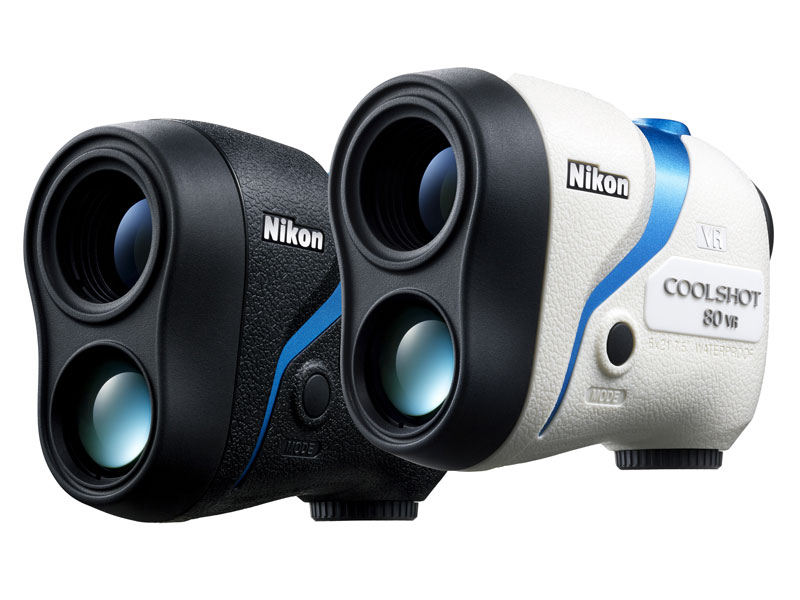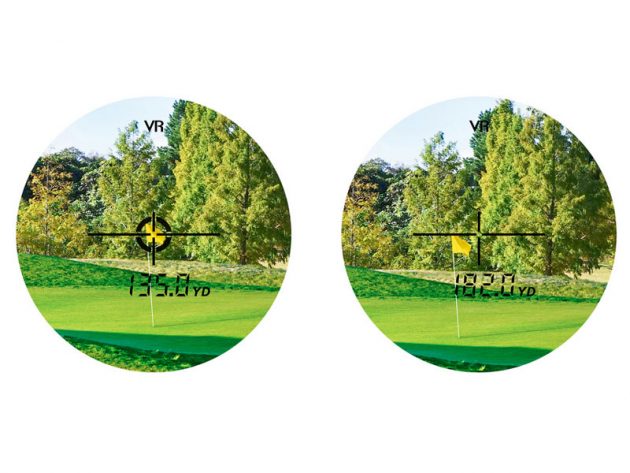Nikon Coolshot 80 VR Laser Rangefinder Review
We test out Nikon's exciting new laser rangefinder technology

These are premium laser units, no question, but the Vibration Reduction technology is a genuine step forward in laser rangefinder innovation that golfers will enjoy, not only because it makes the process easier, but because it will reduce errors and speed up play for those using it.
-
+
Fun and innovative features that make the lasers significantly easier and quicker to use than previous Nikon lasers
-
-
The white cover does discolour quite easily. The premum price will be a deterrent to some
Why you can trust Golf Monthly

Golf Monthly's Nikon Coolshot 80 VR laser rangefinder review, two new devices that boast a new Vibration Reduction feature for easier zapping
Nikon Coolshot 80 VR laser rangefinder review
You may not think there are many more advances in laser rangefinder technology that can be achieved given the one simple job these devices are tasked with out on the course.
Bushnell’s JOLT technology proved there was room for innovation in this category and now, Nikon has shown its hand when it comes to producing ground-breaking technology that golfers will benefit from.
On the new Nikon Coolshot 80 and Coolshot 80i laser rangefinders, which replace the Coolshot 40 models, there is something called a Vibration Reduction system keeps your intended the target in the viewfinder.
Nikon say this makes it more stable for easier aiming and measuring and it’s hard to argue. It’s a strange sensation at first that plays with your head and while it takes a few goes to get used to, once you’ve got the hang of it there’s no doubt it genuinely helps speed up the process of locking on to a flag from the background.

Rather than receiving a vibrating burst like on Bushnell devices, with the Nikon you see a ‘Locked On’ sign in the viewfinder for reassurance the flag has been found.
The first target priority mode speeds this process along even further, as does the shape of the unit fitting nicely in your hand. The tacky material also help you maintain a secure grip on the device but does seem to gather dirt on the standard white unit should you choose not to keep it stored in the accompanying carry case.
The display is simple, easy to see and ably assisted by the focus toggle underneath the eyepiece. The distances are displayed quickly, accurately and to the nearest half a yard, which has always seemed pointless to me (what difference does half a yard make to your club selection?) but if the technology is there, it may as well be utilized.
Get the Golf Monthly Newsletter
Subscribe to the Golf Monthly newsletter to stay up to date with all the latest tour news, equipment news, reviews, head-to-heads and buyer’s guides from our team of experienced experts.

Joel has worked in the golf industry for over 15 years covering both instruction and more recently equipment. He now oversees all equipment and video content at Golf Monthly, managing a team of talented and passionate writers and presenters in delivering the most thorough and accurate reviews, buying advice, comparisons and deals to help the reader or viewer find exactly what they are looking for.
One of his career highlights came when covering the 2012 Masters he got to play the sacred Augusta National course on the Monday after the tournament concluded, shooting a respectable 86 with just one par and four birdies. To date, his best ever round of golf is a 5-under 67 back in 2011. He currently plays his golf at Burghley Park Golf Club in Stamford, Lincs, with a handicap index of 3.1.
Joel's current What's In The Bag?
Driver: Titleist GT3, 9°, Fujikura Ventus Black 6 S shaft.
Fairway wood: Titleist TSR3, 15°
Hybrid: Titleist TSi2, 18°
Irons: Titleist T150, 4-PW
Wedges: Titleist Vokey SM10, 50°, 54° and 58°
Putter: LAB Golf DF3
Ball: 2025 Titleist Pro V1x
-
 Justin Thomas Confirms Stand-In Caddie Will Not Replace Long-Term Looper After First Victory Since 2022
Justin Thomas Confirms Stand-In Caddie Will Not Replace Long-Term Looper After First Victory Since 2022Thomas won the RBC Heritage with Max Homa's former looper, Joe Greiner as his assistant but is looking forward to welcoming his regular caddie back soon
By Jonny Leighfield Published
-
 Rose Zhang Ruled Out Of Chevron Championship
Rose Zhang Ruled Out Of Chevron ChampionshipThe American hasn't featured in a competitive event since withdrawing from the T-Mobile Match Play, with it reported that Zhang will miss the Chevron Championship due to an ongoing neck injury
By Matt Cradock Published
-
 Chevron Championship 2025 Picks, Odds And Predictions
Chevron Championship 2025 Picks, Odds And PredictionsThe first women's Major of 2025 gets underway at The Club at Carlton Woods, with Nelly Korda looking to defend her championship
By Matt Cradock Published